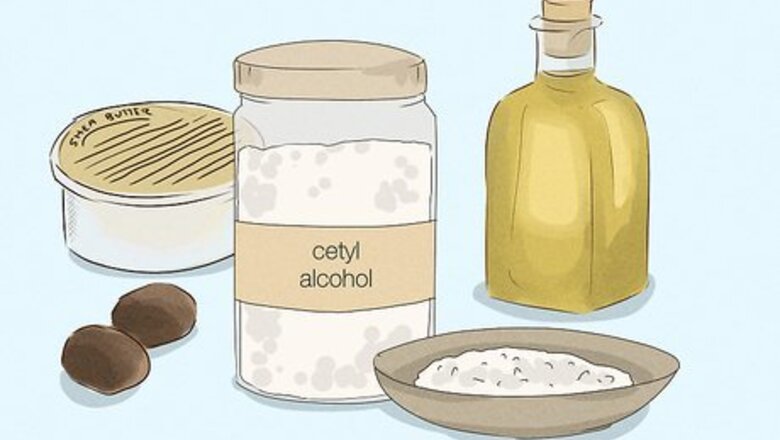
views
X
Research source
It’s a good moisturizer, and it may be a worthwhile ingredient to add to your beauty and skin care regimen!
Creating Homemade Lotion
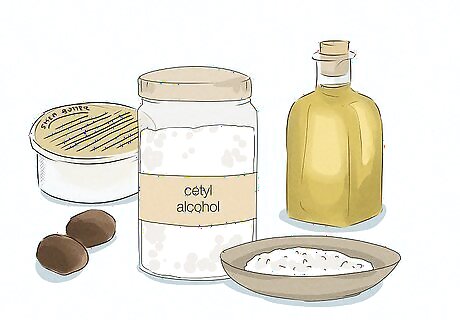
Pick out some cetyl alcohol and other ingredients for your homemade lotion. Keep in mind that most lotions are made with a combination of oils, butters, distilled water, stearic acid, preservatives, and some type of emulsifier, like cetyl alcohol. Check online or visit a specialty shop to pick up more specific ingredients for your lotion, like stearic acid, shea butter, and unique oils. You can find cetyl alcohol at most beauty stores, or at regular grocery stores. You can find distilled water at your grocery store, as well. Avocado oil, sunflower oil, and sweet almond oil are great choices for a lotion. Preservatives help keep your lotion fresh for a long period of time. Phenonip is a great choice for this. This lotion will be made with both oil and water products, which don’t usually mix together. Cetyl alcohol works as an emulsifier, or an ingredient that forces water and oil to combine.
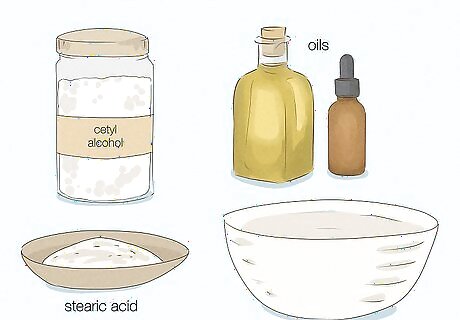
Mix your oils, stearic acid, and cetyl alcohol in a microwaveable bowl. Set aside a large, microwave-safe bowl or cup, then pour in 2.7 fl oz (80 mL) of oil, 1 fl oz (30 mL) of stearic acid, and 1.2 fl oz (35 mL) of cetyl alcohol. You can use 1 type of oil or you can use multiple types—you just have to mix in 2.7 fluid ounces (80 mL) total.
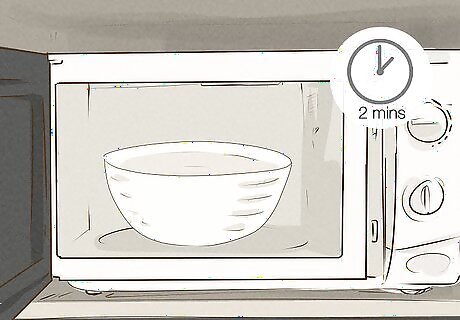
Microwave the mixture for 2 minutes so the ingredients melt. Place the bowl or cup in the microwave and set a timer for about 2 minutes. Once it finishes running, move the melted mixture back to your workspace. Give the ingredients a small stir to make sure everything is melted together. If your mixture still doesn’t look melted, put it in the microwave for another 15 to 30 seconds.
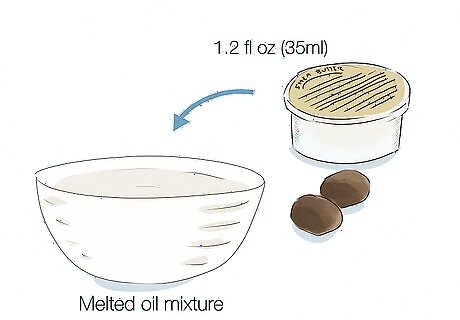
Stir some shea butter into the hot oil mixture. Pour 1.2 fl oz (35 mL) of shea butter into the melted oil. Use a spoon to stir the shea butter in gradually. Don’t put the mixture in the microwave—just let it melt into the oil mixture on its own. This may take a few minutes, so be patient!
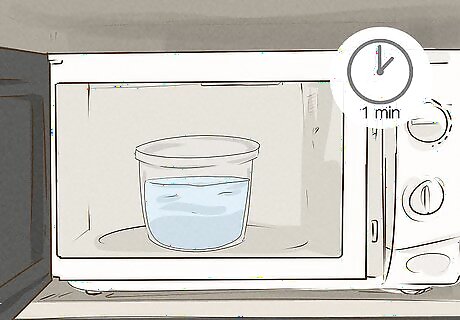
Heat up your distilled water for 1 minute. Check that your distilled water is in a microwave-safe cup, then move it to your microwave. Set the cook time to a minute, and let your water reach a warm but not boiling temperature.
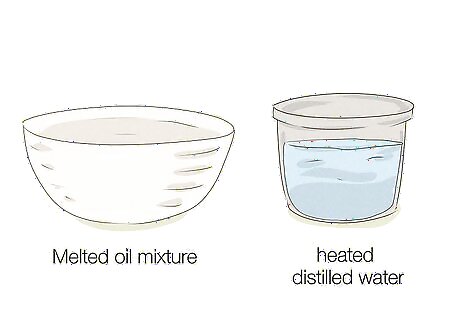
Combine the distilled water and oil mixture gradually. Keep the melted oils, cetyl alcohol, and stearic acid in a separate container, then slowly pour the heated water in. Watch as a reaction occurs and the lotion turns white. Make sure that your oils are in a container that’s large enough to hold the water!

Speed up the emulsifying process with a hand blender. Plug in a hand-powered or stick blender, which, as the name suggests, is a small and long handheld device. Plug in the blender and turn it on for about 10 to 15 seconds. Pause the blender, then turn it on again to continue mixing the ingredients. Continue this process until your lotion is thick and not that runny. While you don’t have to do this, a stick blender can really help your lotion along. This is also known as an immersion blender. If you don’t have one on hand, you can pick one up online or at a home goods store for less than $20.
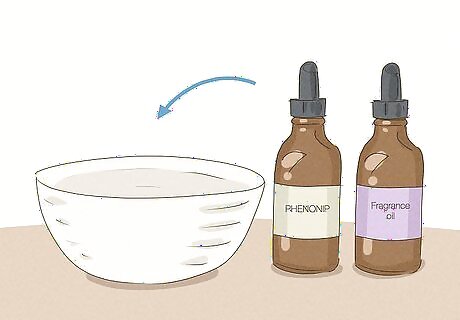
Add in a few drops of phenonip and fragrance. Squeeze about 0.2 fl oz (5.9 mL) of phenonip into the lotion with an eyedropper tool, along with 0.1 fl oz (3.0 mL) of your desired fragrance. Stir all of the ingredients together into the lotion to create a really cohesive mixture. You can purchase phenonip and different fragrance oils online. Use whatever fragrance you’d like to scent your lotion, but try not to overdo it. A little goes a long way! Phenonip is a liquid that helps prevent your cetyl alcohol lotion from going bad over time.
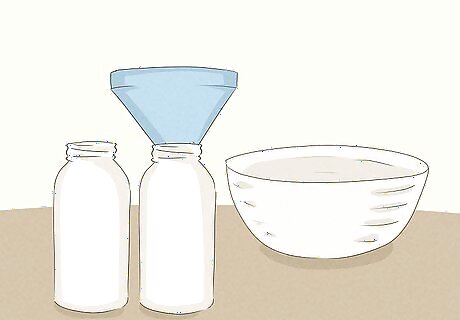
Funnel the finished lotion into a reusable bottle and cap it after 2 hours. Place a funnel along the mouth of a clean, open bottle, then pour the mixture in. Transfer the lotion to a bottle while it’s still a bit fluid—if you wait an hour or 2, the product will be pretty congealed. Leave the cap off for a couple hours so the extra water and moisture can evaporate, then secure the lid on top. If you’re planning on selling the lotion, be sure to label the ingredients on the front. You can use the lotion for several months! If it starts to look or smell rancid, toss it out and make a new batch.
Making a Creamy Luminizer
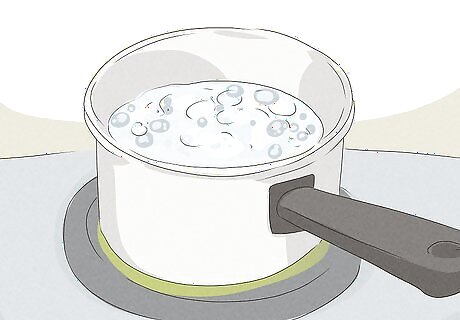
Heat up 3 cm (1.2 in) of water in a saucepan to make a water bath. Fill up a medium saucepan about halfway full, then place it on your stovetop. Turn the heat up to the highest setting until the water is boiling. Then, turn the heat back down to medium low so the boiling water can simmer. This water bath will help melt your ingredients and create a smooth, rich product.
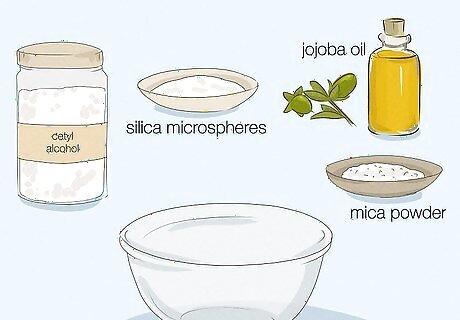
Pour jojoba oil, silica microspheres, cetyl alcohol, and mica powder into a heat-safe glass bowl. Add 2.5 g of jojoba oil into the bottom of the bowl, then mix in 0.75 g of cetyl alcohol and 0.25 g of silica microspheres. Stir in a pinch of hilite gold mica, along with a pinch of both gold mica and silver mica. It’s okay if your ingredients don’t mix well together yet—they’ll combine once they’re in the water bath. The mica powder helps your lumizer look really luminescent. Since you’re dealing with really small amounts of product here, it may be best to use a digital scale to measure your ingredients. Use a bowl that’s at least 3 to 4 in (7.6 to 10.2 cm) tall, so it won’t get filled with water in the bath.
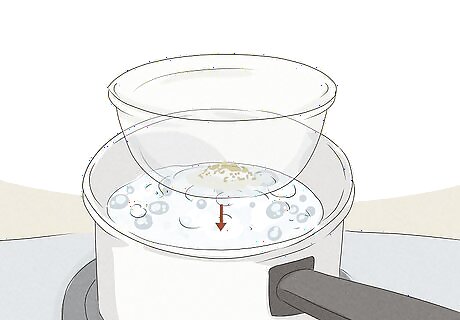
Move the glass bowl to the bath so you can melt and mix the ingredients. Put on a pair of mitts or gloves, then move your bowl to the center of the simmering water. Check that all of the ingredients are submerged in the hot water so they can begin to melt and form a consistent mixture.
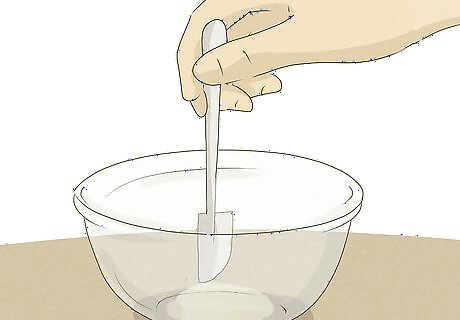
Remove the glass bowl after all the ingredients are melted. Mix the ingredients together with a rubber spatula so the mixture is as smooth as possible. Keep an eye on the mixture as best you can—once the mixture is a liquid and has no clumps, remove it from the hot water bath. Check that all the tiny cetyl alcohol beads are completely melted before you remove the bowl from the water. Always use mitts or protective gloves when dealing with hot water.
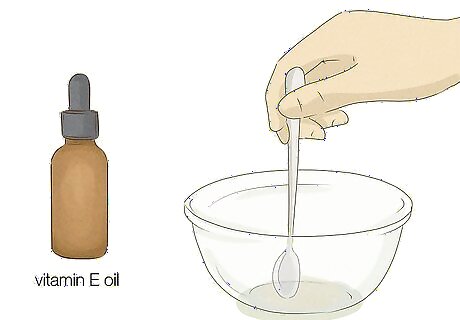
Stir in a small amount of vitamin E oil to the mixture. Mix a tiny spoonful, or about 0.0125 g, of vitamin E oil into the rest of your luminizer. You may need to use a small spoon or toothpick to make a consistent mixture.
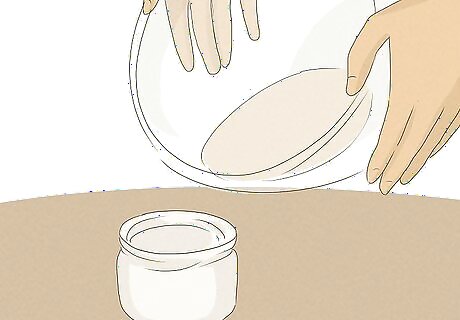
Pour the melted ingredients into a small jar. Set aside a small, clean glass jar that can hold about 5g (1 tsp) of liquid. Pour all of the melted luminizer into your jar for easy storage.
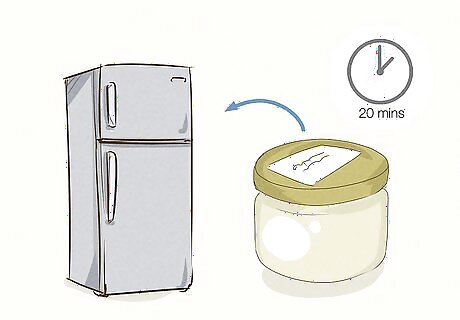
Seal the jar and refrigerate it for 20 minutes. Secure the lid on top of the lumizer and place it in your refrigerator. Label the jar with some masking tape so you can remember what the product is and when exactly you made it. Keep the product in the refrigerator for 20 minutes so it congeal and set properly.
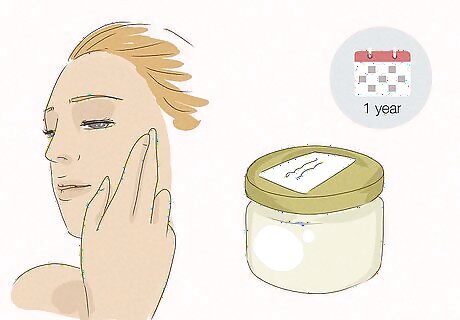
Use the luminizer within 1 year. Keep an eye on your product’s label and make sure it isn’t going bad. If your luminizer starts smelling bad, throw it away, as the oils are probably rancid. Lumizer looks best when applied to your brow bones, Cupid’s bow, or cheekbones.Tip: Color can be a big indicator of whether a product is rancid or not. While slight color changes aren’t a big deal, you may want to toss out your oil if it’s really dark or a different color altogether.




















Comments
0 comment